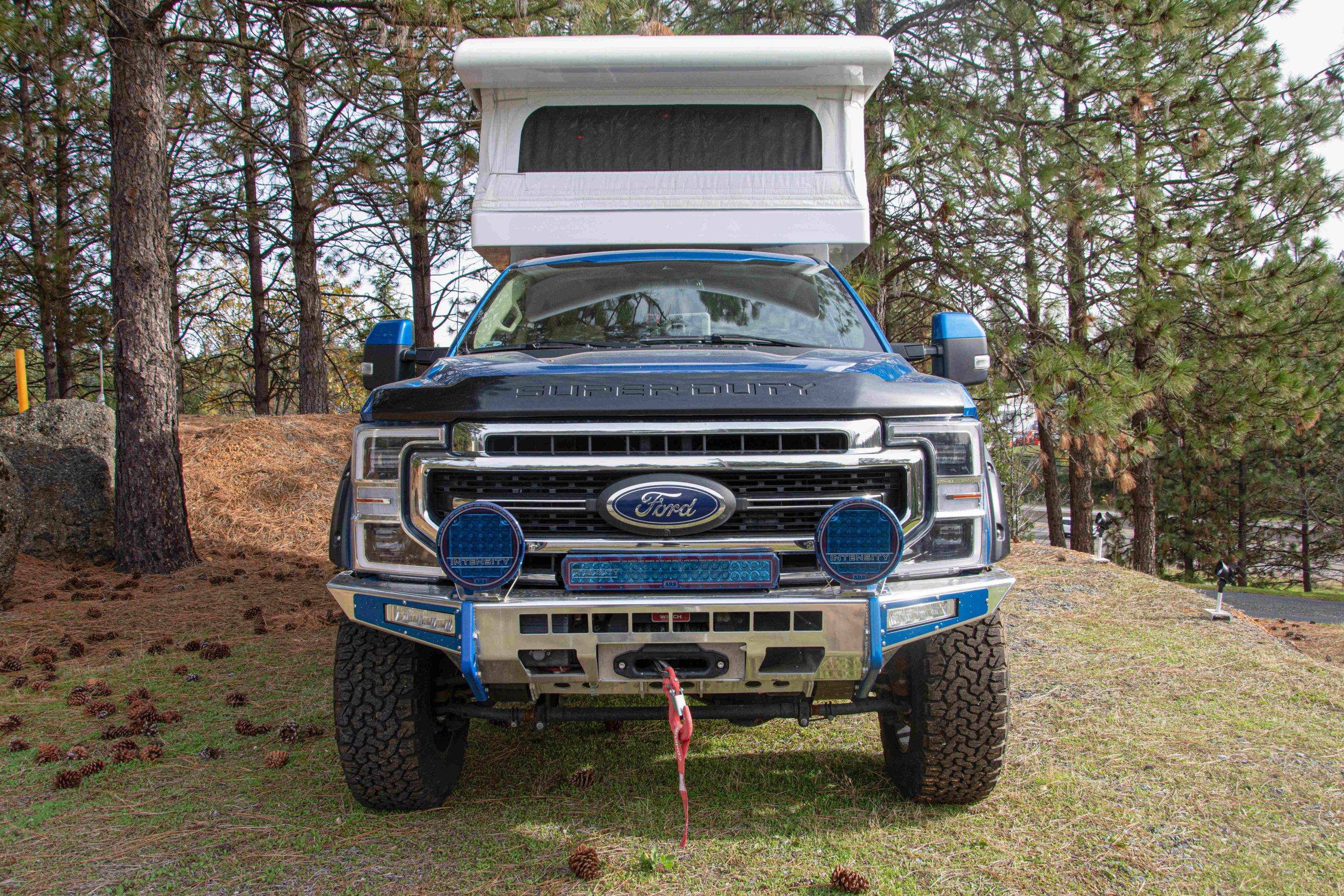Nimbl Campers was born out of the remnants of XP Campers which was sold at auction in August 2019. Jon Turner, Judd Newman, and investors saw an opportunity and invested in a business that they rightly believed had incredible potential. Currently, the company’s order book is full, and plans are afoot to expand production by investing in new technologies and processes, which will speed up production and advance the end product significantly.
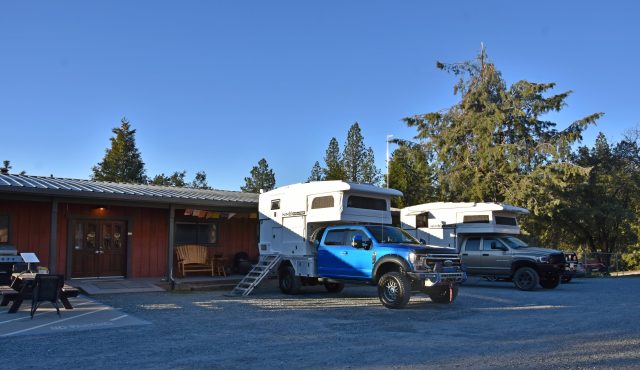
We visited late in November 2021 and were granted unrestricted access to the production facility, the staff, and the grounds.
Based in Colfax, California, at the foot of the Donner Pass, the Nimbl production facility is well placed for the utilization of regional products, components, and skills. The facility was once a craft brewery and retains a pleasant atmosphere beneath Ponderosa pines. The manufacturing compound is divided between the composite, fabrication, and assembly departments. The administrative building houses management as well as the engineering and design department (overlander friends are welcome to visit and maybe play a game of pool; most Nimbl employees have seen their fair share of travel and know what a traveler needs). It is clear from the first foot in the door that there has been a significant investment in cutting-edge machinery, tools and materials, and a skilled labor force—no expense has been spared.
Steve Kozloff, the master yacht builder (and creator of Arctic expedition yachts and The Galleon, a billion-dollar yacht), designed the original XP Camper and remains Nimbl’s chief designer. The camper draws much from the design and manufacturing principles of the marine world and expedition craft; it helps to imagine the camper as an “overland yacht.” I like to think of it as a spaceship.

There are three main components of a Nimbl Camper: namely the base vehicle, flatbed, and camper body. Nearly every aspect of the entire vehicle build takes place onsite. The client-supplied base vehicle, preferably a Ford F-350 V8 or most modern 1-ton pickups (Ford F-350, Chevy/Ram 3500) undergoes various upgrades to the suspension and general running gear, body protection, and much more, according to the client’s specification. When necessary, the team will outsource to local specialist fabricators and suppliers such as Sacramento Spring or Dissent Off-road (for off-road bumpers).


The aluminum flatbed, which forms the basis of the camper, is entirely manufactured onsite by the fabrication department, or more specifically, by an amicable and highly skilled welder by the name of JR and the master of all fabricators, named Andy.


JR and Andy work magic with a welding machine as they create flatbed bases and accessories, most of which are unique. The flatbed trays are complete with storage boxes, fuel inlets, lighting ports, and whatever storage solution a client might need. After welding and assembly, the flatbed will be cleaned and processed before being handed over to the installation team, who will affix lights, seals, locks, and all relevant accessories before the tray is mated to the base vehicle in anticipation of the camper body.




Dean, the production manager, and his creative crew run the composite department where vacuum infusion and traditional hand-lay-up methods are used to create and finesse the two essential halves of the camper, upper and lower. The furniture for each camper is also made here. Aerodynamic and incredibly sturdy, the camper body is finished in a marine gel coat which ensures that damage to the body can be repaired by boat builders globally.



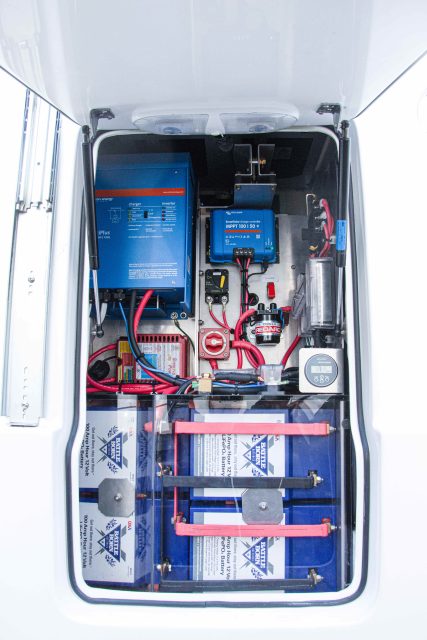

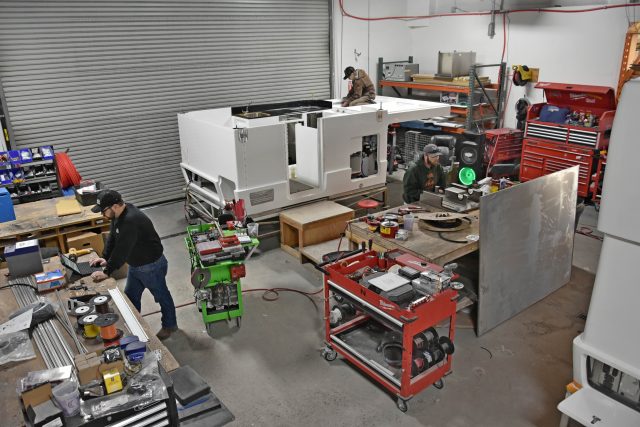

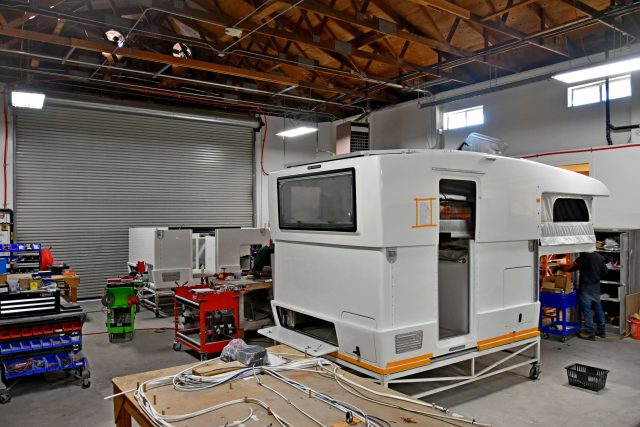
Eventually, the three main components come together. A new Nimbl camper begins to resemble final form, all under the careful and highly competent attention of Alex, the director of operations and Adam, operations chief – both Nimbl gurus. Electrical, water, cooking, and cooling and heating systems are painstakingly installed. The flooring is marine grade vinyl with mahogany and teak accents, the doors are carbon fiber, the bed memory foam, and the tenting is stitched locally. With windows and skylights, furniture, and extractor fans installed, the system is tested rigorously. Regular inspection and quality control measures are taken throughout the entire build process to ensure proper fitment and installation.


Upon completion, the vehicles undergo a thorough testing process and all major systems are inspected by the production manager for correct operation and installation. New owners typically spend the day at the Nimbl facility for a complete training, systems check and Q&A session. Often clients will stay overnight or camp locally for a couple days and any problems can be promptly addressed either at the Nimbl facility or a technician will travel to the customer.
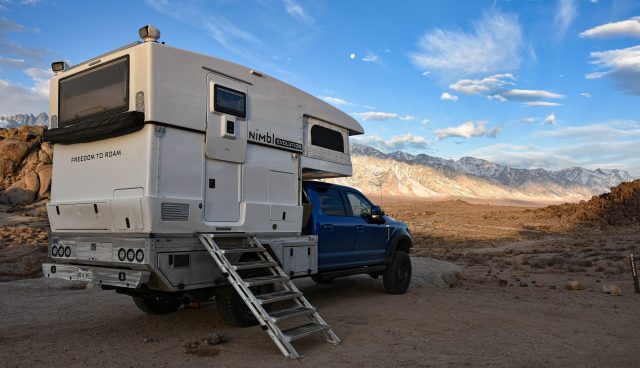
The final result is a camper that will outlive the base vehicle but, due to foresight in design, the camper can be transferred to a new vehicle and continue to explore the planet. The Nimbl team is so confident of their workmanship that they offer a five-year warranty on their manufacturing, and all components follow the manufacturers’ warranty. Battle Born Batteries, for example, provides a 10-year warranty.
Ultimately, it takes a highly skilled and well-meshed team just over two months to handcraft a vehicle with an exceptional reputation that fits neatly in the mid-pricing for new, bespoke overland campers.
Our No Compromise Clause: We carefully screen all contributors to make sure they are independent and impartial. We never have and never will accept advertorial, and we do not allow advertising to influence our product or destination.


